In 2020, Raymond Chen explained the visual effects work made by DNEG on Togo. He then worked on Ghostbusters: Afterlife.
Russell Bowen started his career in visual effects in 2009 at DNEG. He has worked on a number of projects including John Carter, The Fate of the Furious, Pacific Rim: Uprising and Venom: Let There Be Carnage.
Before joining DNEG, Ricardo Miguel Roldao Silva worked in many studios such as Framestore and MPC. He has worked on films such as Godzilla, Maleficent, Batman v Superman: Dawn of Justice and Venom: Let There Be Carnage.
How did you get involved in this film?
Russell Bowen // With Raymond Chen already onboard as the Production Supervisor alongside Bruce Jones, together with the amazing DNEG team, I joined the show as the VFX Supervisor not long after. I’ve worked with Raymond on a number of previous shows and was excited to jump back in with him at the helm.
How was the collaboration with Director David F. Sandberg?
Raymond Chen // The collaboration with David was great. While he definitely had a clear sense of what he wanted, he was open to creative input. One example of this was when the DNEG team proposed some changes to the dragon’s designs to take the approved sculpt and make the creature’s anatomy and proportion feel more powerful and balanced.
Can you tell us more about DNEG’s work?
Russell Bowen // As the lead VFX partner, DNEG was spread across a range of sequences and assets, delivering more than 750 shots in total. Asset-wise, we were tasked with building all of the digi doubles for the superheroes, as well as the creatures like the unicorn and the dragon, Ladon. For the shot work, we took on a series of sequences with Anthea’s ‘Power of Axis’, the introduction of the unicorns in the nest, the fight scene underground between Shazam and Hespera, the dome sequence with the magic carpet, as well as the giant end battle! To name a few.
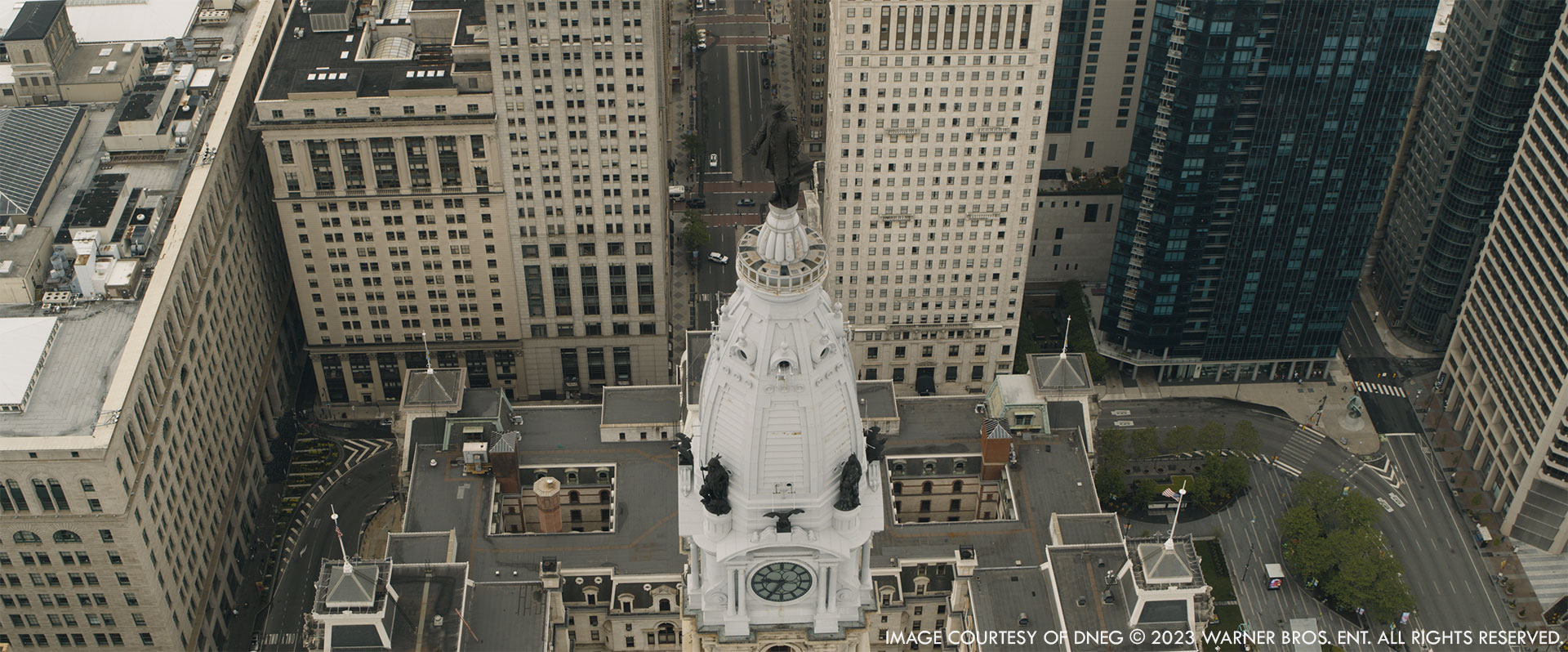
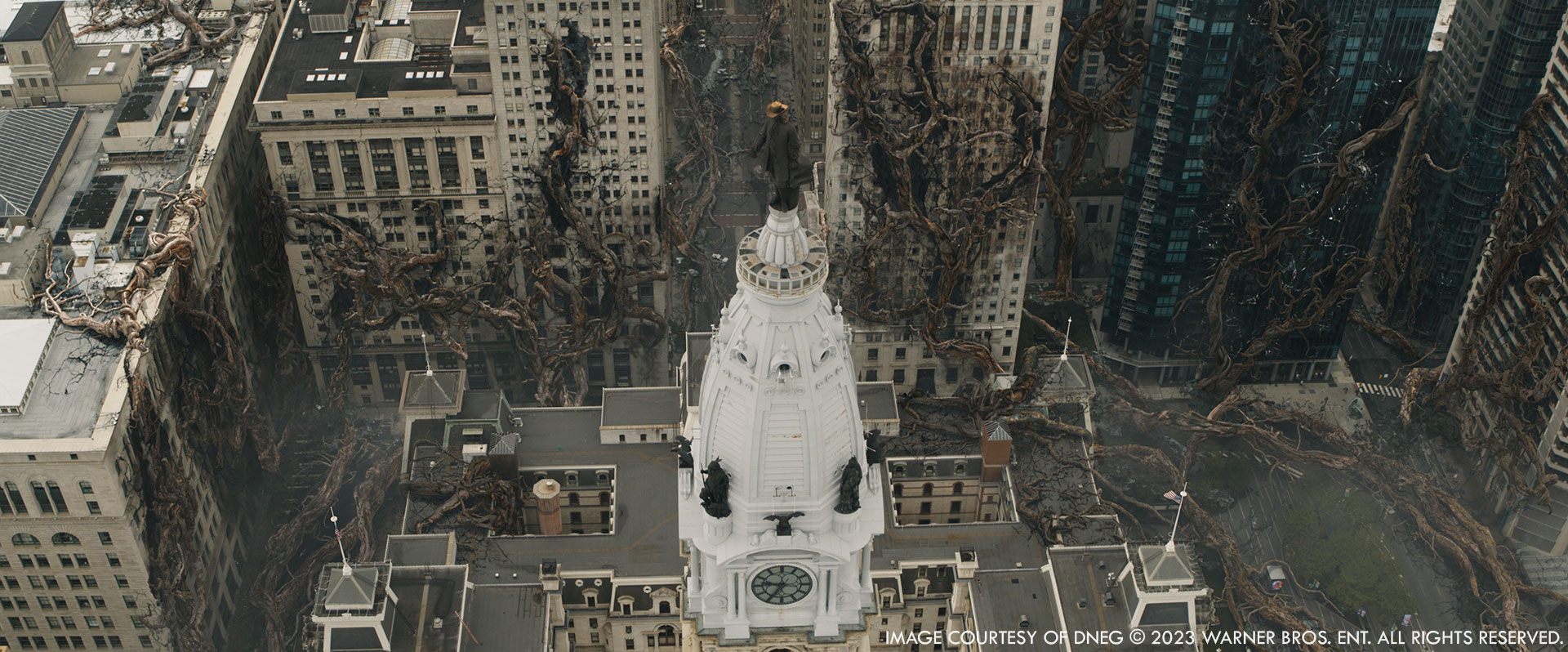
Can you tell us more about the shooting of the flying sequences?
Raymond Chen // We had previs for many of the sequences which involved flying, and storyboards for the shots where we didn’t have previs. We went through the list with stunt coordinator Chris O’Hara, and decided on different methodologies for the different shots. We used wires and harnesses, tuning forks, or parallelograms depending on the type of flying action needed. Some of the shots only required the addition of CG capes, but we had to replace some of the arms and legs on a number of shots where we felt the pose or performance needed improvement.
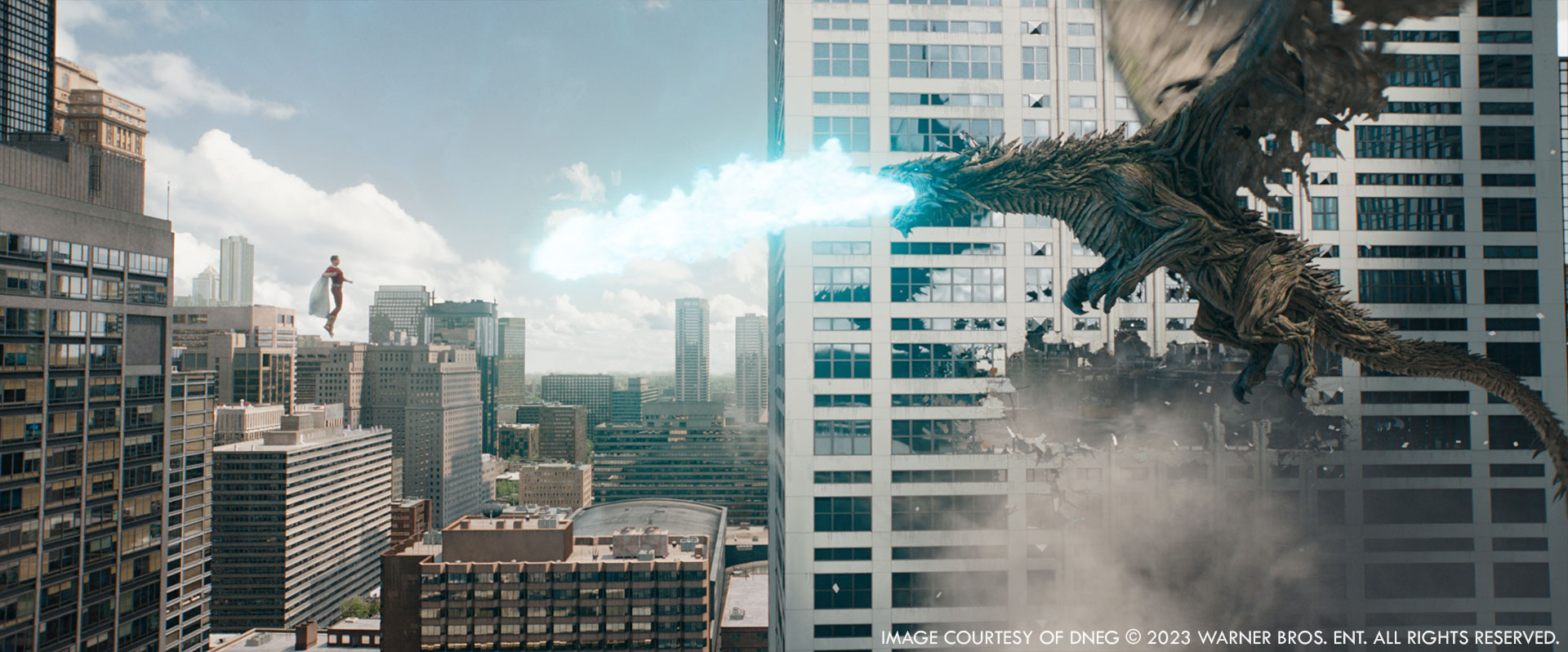
What was your approach with creating the dragon?
Raymond Chen // For shooting plates that included the dragon Ladon, we tested out an in-camera solution of showing previs animation over the video feed, but finally went with a simpler version using Cyclops, an iPad based AR app. To determine the size of the dragon within each location and assist camera operators in framing the CG creature efficiently, we utilised several dragon poses. While we weren’t able to include any animation, it was very useful to be able to use the iPad to show the CG dragon within the actual physical space. We collaborated with SFX supervisor J.D. Schwalm and his team on several shots featuring Lucy Liu riding the dragon. In these shots, we utilised preliminary animation of the dragon and adapted it for use on an industrial robot arm that is typically used for automobile production. The robot arm was outfitted with a riding seat and horn handles to imitate the dragon’s head, allowing Lucy’s character Kalypso to realistically simulate riding on the dragon’s back. We used a combination of walking, flying cycles and bespoke animation for some specific actions.
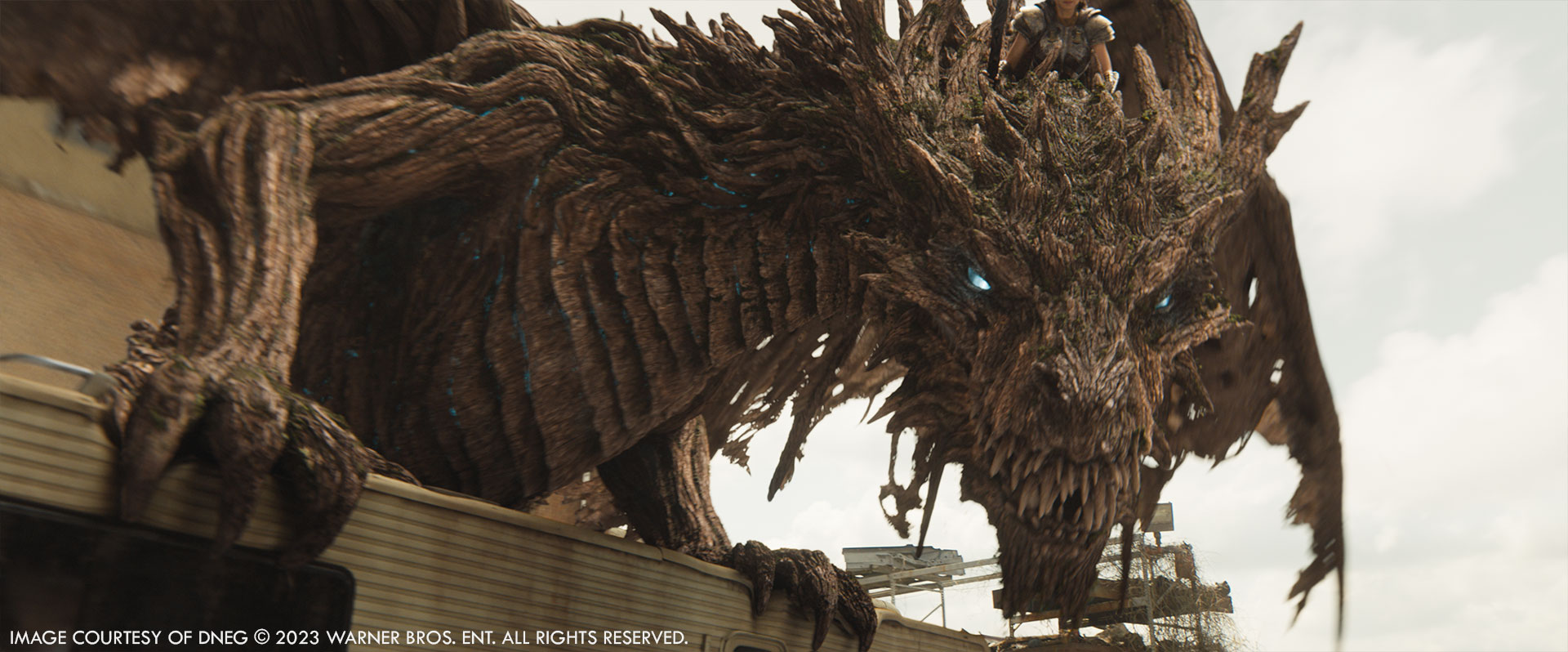
Can you elaborate about its creation and animation?
Russell Bowen // Once DNEG received the art department’s concept and sculpt, we began the reverse engineering process. The artwork and concept sculpt were incredible, but as with all concepts, once you start to explore how a creature moves or how it needs to feel in a shot or sequence, certain design decisions need to be reworked or completely reimagined. With the dragon Ladon, it was predominantly the limb and head proportions that needed work. Once we got him moving, we realised pretty quickly that he looked very juvenile. This was mostly to do with the front and back legs being too small. We worked with DNEG Build Creature Supervisor Lucas Cuenca to redesign these areas along with DNEG Animation Supervisor Ricardo Silva’s team. Through the use of animation studies, we were able to find a good balance that gave the dragon a more mature and powerful appearance.
Since the dragon was made of wood, this was an added challenge. We had to find the right balance of having the dragon feel sturdy but not too rigid where the motion would seem robotic. Too much flex and he would soon look like a creature in a rubber suit. So we also made changes to the platelets and the armour on his body, breaking them up so they could articulate and slide over one another. This gave the creature the flexibility we needed in the rig.
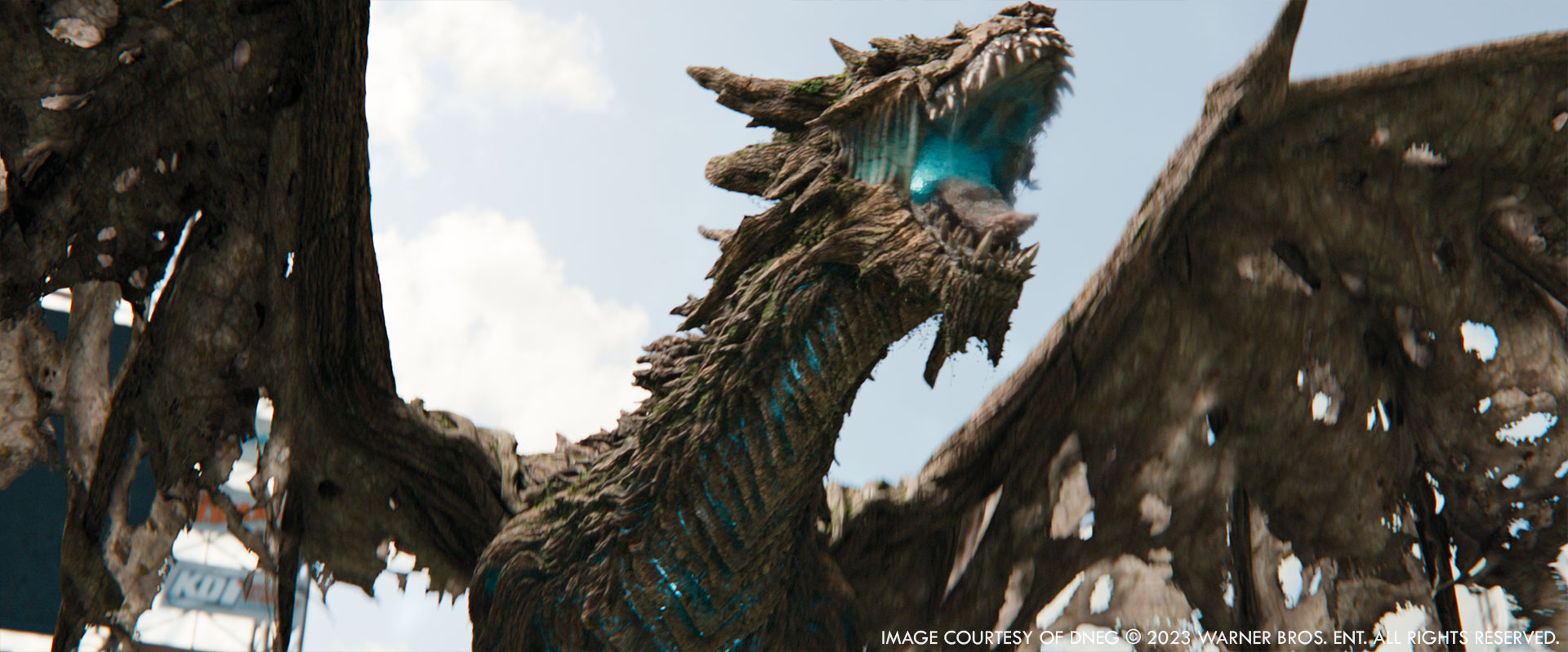
What kind of references and influences did you receive for the dragon?
Ricardo Miguel Roldao Silva // The key references were the Komodo dragon and a lion for the quadruped locomotion. He has the walking gait of a lizard mixed with feline posture. The flight animations are based mostly on bats and big birds like vultures and eagles.
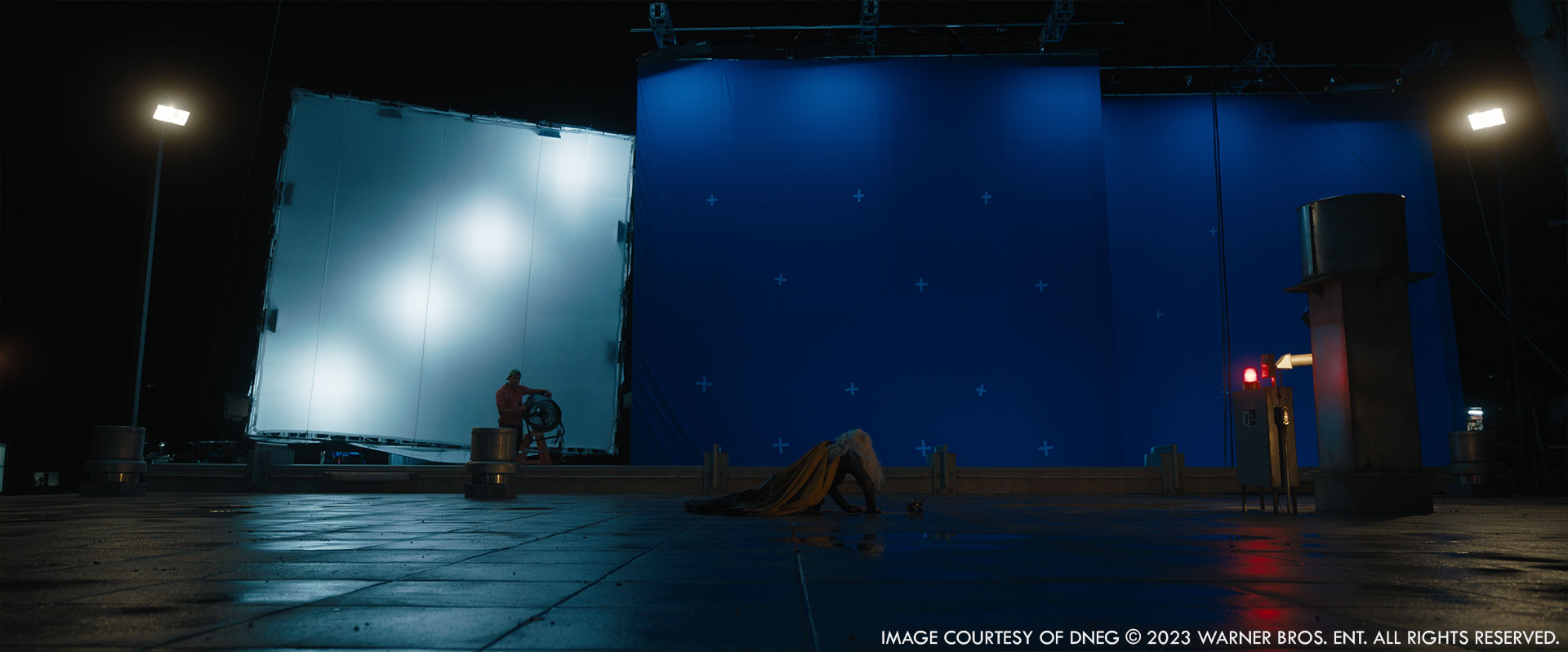
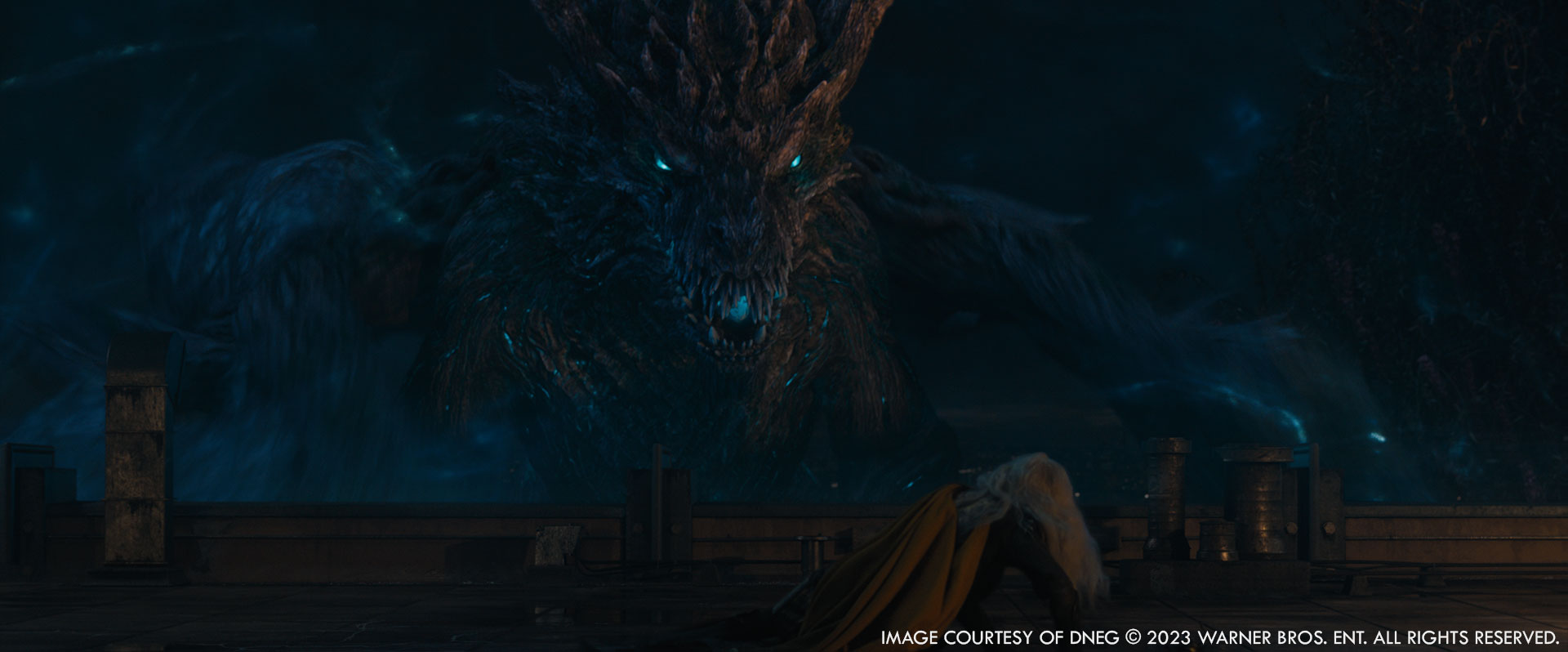
How did you create his specific skin?
Russell Bowen // This needed to happen around the same time as the creation of the ‘Tree of Life’. As the guardian of the Tree, Ladon was made from the same material. We studied a lot of species of trees, trying to find texture that felt decayed or deformed but also menacing. We landed on a lot of references for petrified wood.
All of the ‘soft tissue’ parts of Ladon, like the underbelly, needed to be a lot more flexible than the rest, for example, the junction between the wings, the shoulder and underarm. For these we could lean towards tree vines and roots for inspiration. You may notice the connection between the body and the wings, which, in particular, has some simulated vine-like structures. This allowed those areas to have the range of motion they needed without feeling like rubberised wood.
All of this was then covered in a layer of moss, vines and leaves. These were great additional details that helped not just with the textural look of him, but also helped sell scale. He is massive so having something relatable, like a leaf, helped in shots where there was no other reference. Our awesome Creature team, led by Loic Le Goff, devised a complex simulation rig so that all of this could move correctly and be simulated to the motion of his body. This really added an extra level to Ladon’s look.
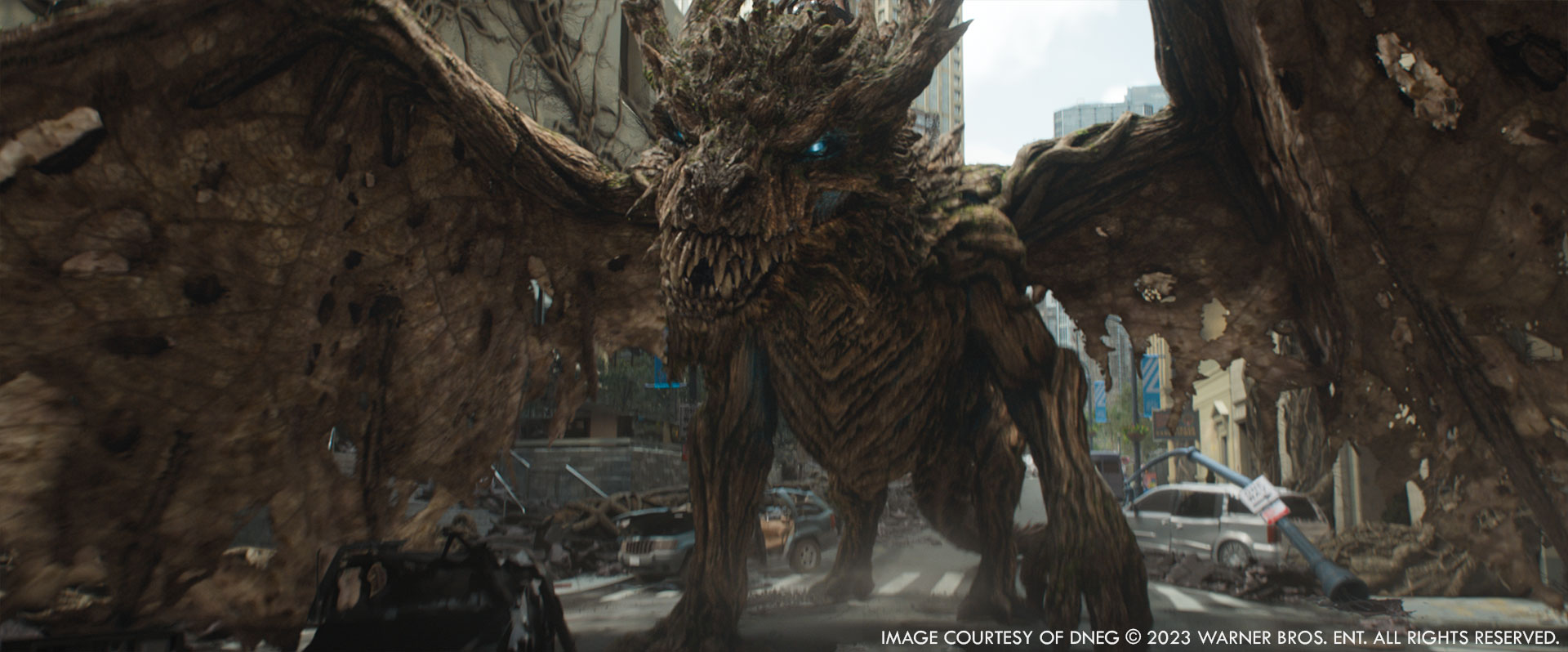
Can you tell us more about his blue fire?
Russell Bowen // This ended up being relatively straight forward (don’t let the FX team know I said that!). Whilst we began exploring and concepting an almost magical fire that introduced magical elements and shapes, this quickly moved into a more realistic flame or rather, more ‘traditional’ fire from a dragon. Our FX team, co-supervised by Nicholas Papworth and Gil Choi, worked up a number of setups for the range of shots it was required in. The simulations needed to be bespoke for wide shots compared to shots inside the stream, for example, the shots with Shazam inside it getting burnt up.
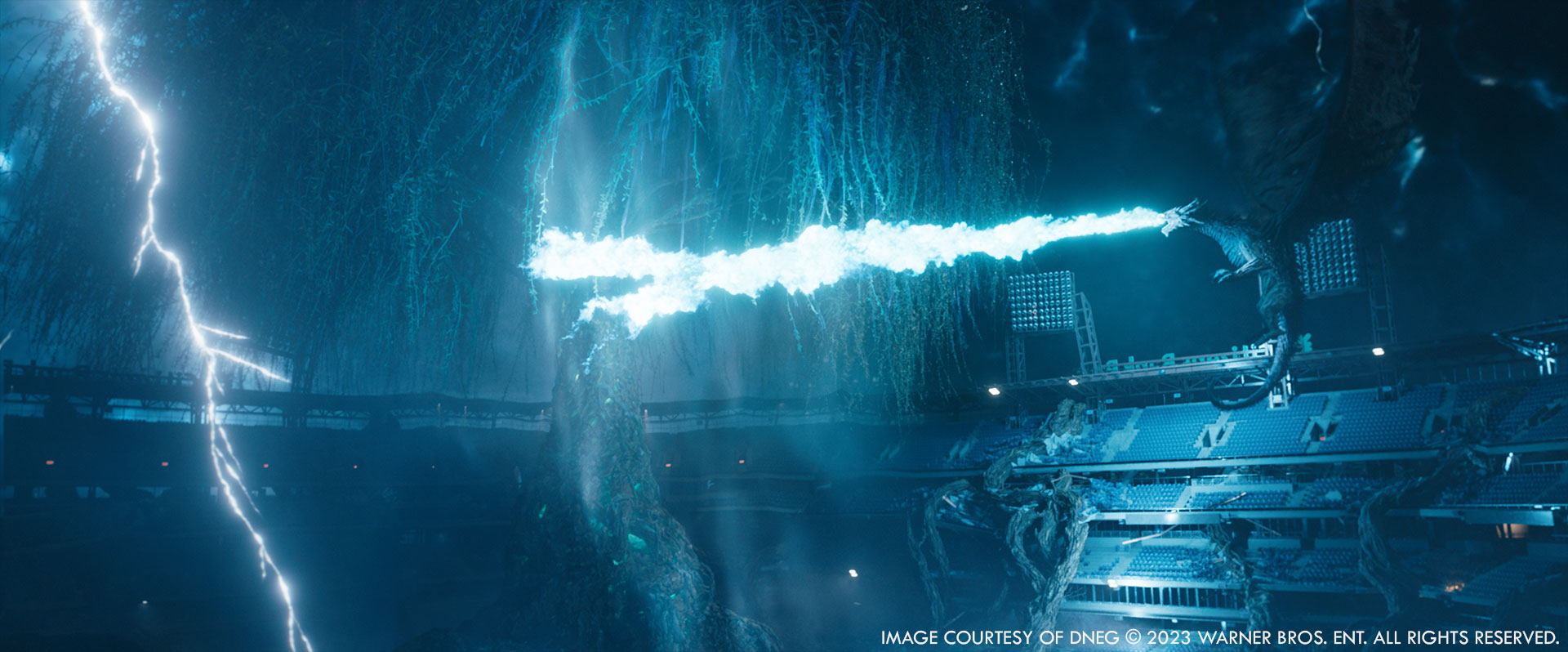
What was the main challenge with the dragon?
Russell Bowen // A creature like Ladon creates a number of hurdles, but overall the wide range of shots posed the biggest challenge. He does everything from breathing fire, walking, running, flying, smashing things, whipping with his tail… I can keep going. He does all of this from a distance to a couple of feet from the lens. So we needed to build him to stand up to all of that.
Can you elaborate about the Unicorn?
Raymond Chen // For the design of the unicorn, it was meant to be similar to the archetypal version of the creature, but with a dark or sinister aspect. This was conveyed with several details: the black colouration, which was actually done with a subtle sheen of colour, like an oil slick, the bony protrusions that lay under the skin and fur on the head and body, and the glowing white pupil-less eyes. We used a puppet head maquette for the shots of the unicorn approaching Darla and getting petted by her, and had multiple motorised riding rigs for shots of the family riding the unicorns.
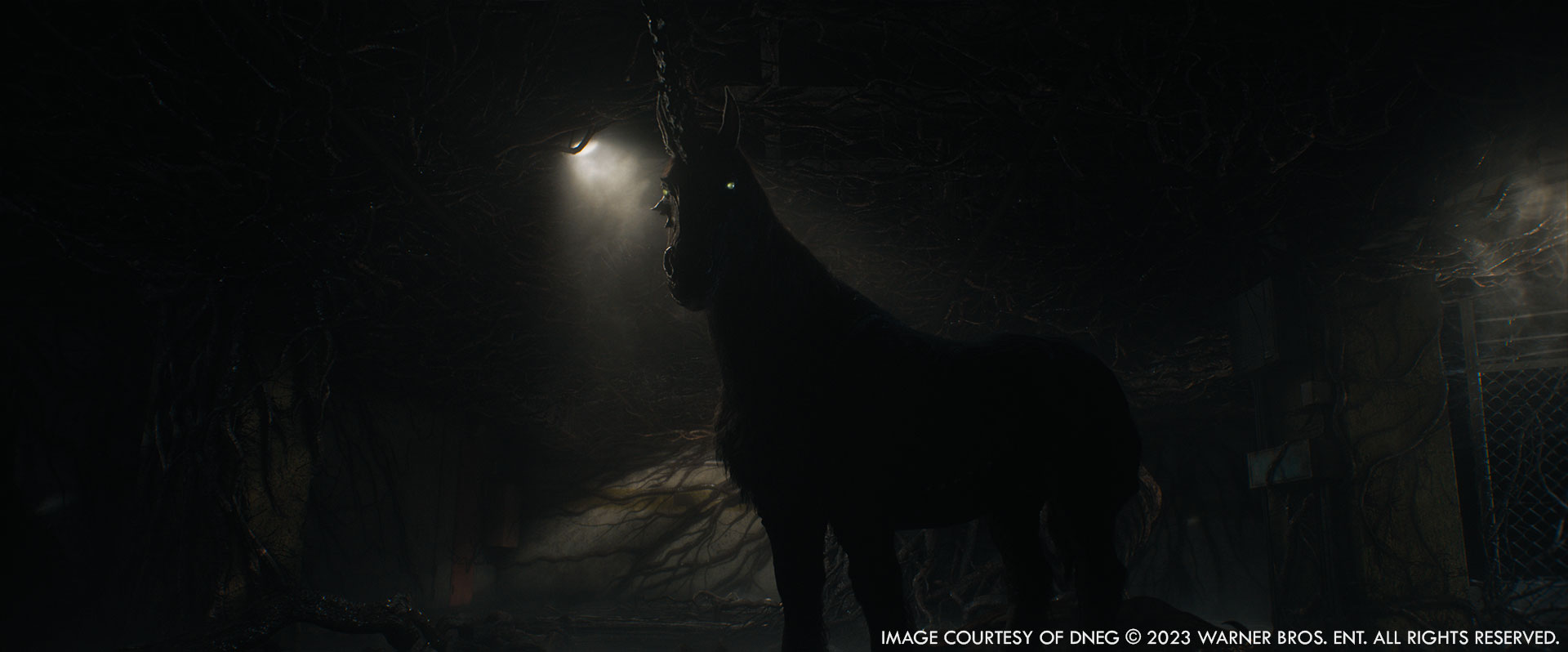
Which creature was the most complicated to create and animate?
Russell Bowen // That’s a difficult one to answer, you’d think that a towering mythical beast like a dragon, made of wood, vines and leaves, with four legs, wings and breathing blue fire would be far more complicated. But in reality, the unicorn was just as complicated, but for different reasons. A unicorn based on the exact anatomy of a horse needs a certain level of realism for the audience. It’s something they can compare it to and their minds will subconsciously do that for them. So you really have to nail all those subtle details. Everything from the way the skin moves or slides over the muscles, the face rig for mimicking the way a horse eats things, to the main muscle system itself and the hair simulation for the mane.
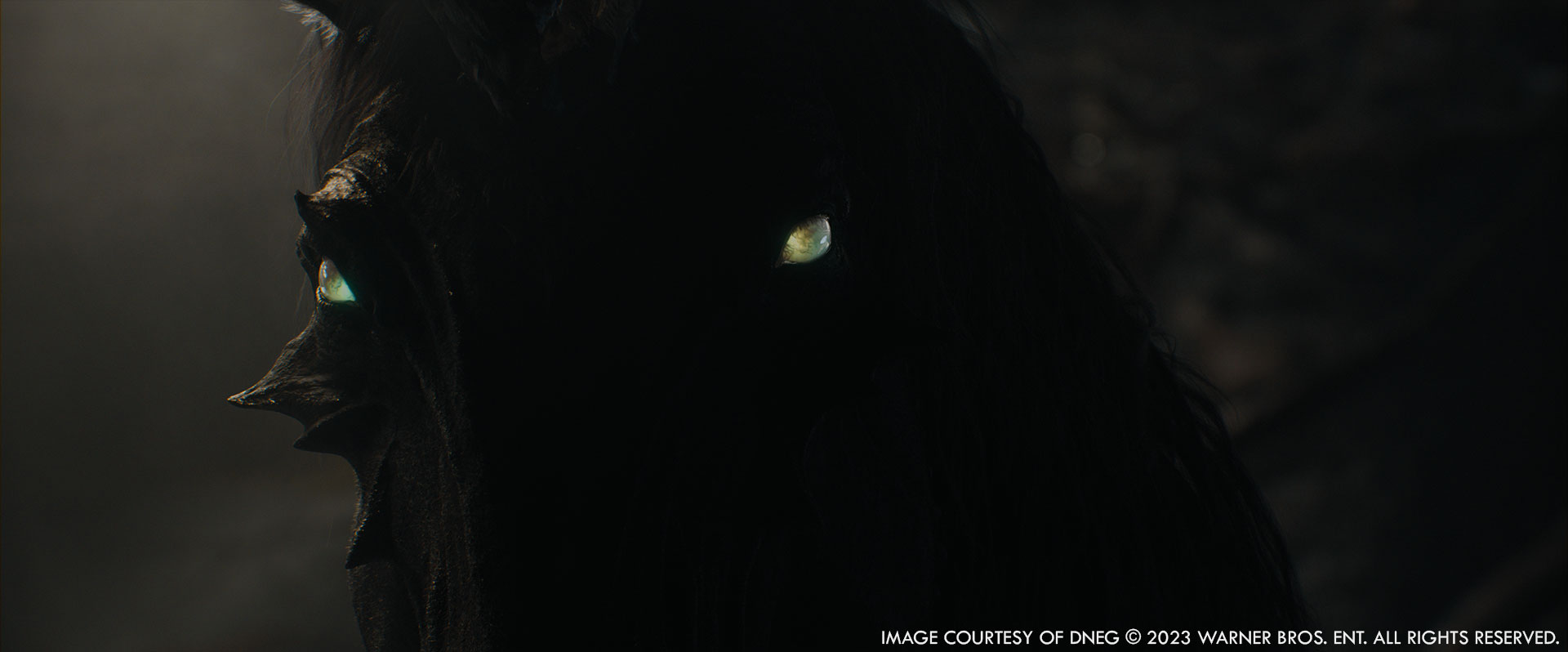
Tricky question, which one is your favourite?
Russell Bowen // Come on, a death unicorn, with luscious long locks of hair that only eats Skittles?? The fight for top dog isn’t even a close one.
Can you elaborate about the environment work?
Raymond Chen // Most of the scenes featuring the city of Philadelphia turned into a CG environment because we faced certain limitations with the live footage captured by the helicopter unit. Although they did shoot some great background plates for the show’s aerial shots, the CG city was necessary in order to make specific alterations such as removing clouds, altering the time of day, and creating travel paths that were not captured during the helicopter shoot.
The Citizens Bank Park stadium was a completely digital creation, created from LiDAR scans, texture photography and helicopter photogrammetry done when we had our Philadelphia unit working.
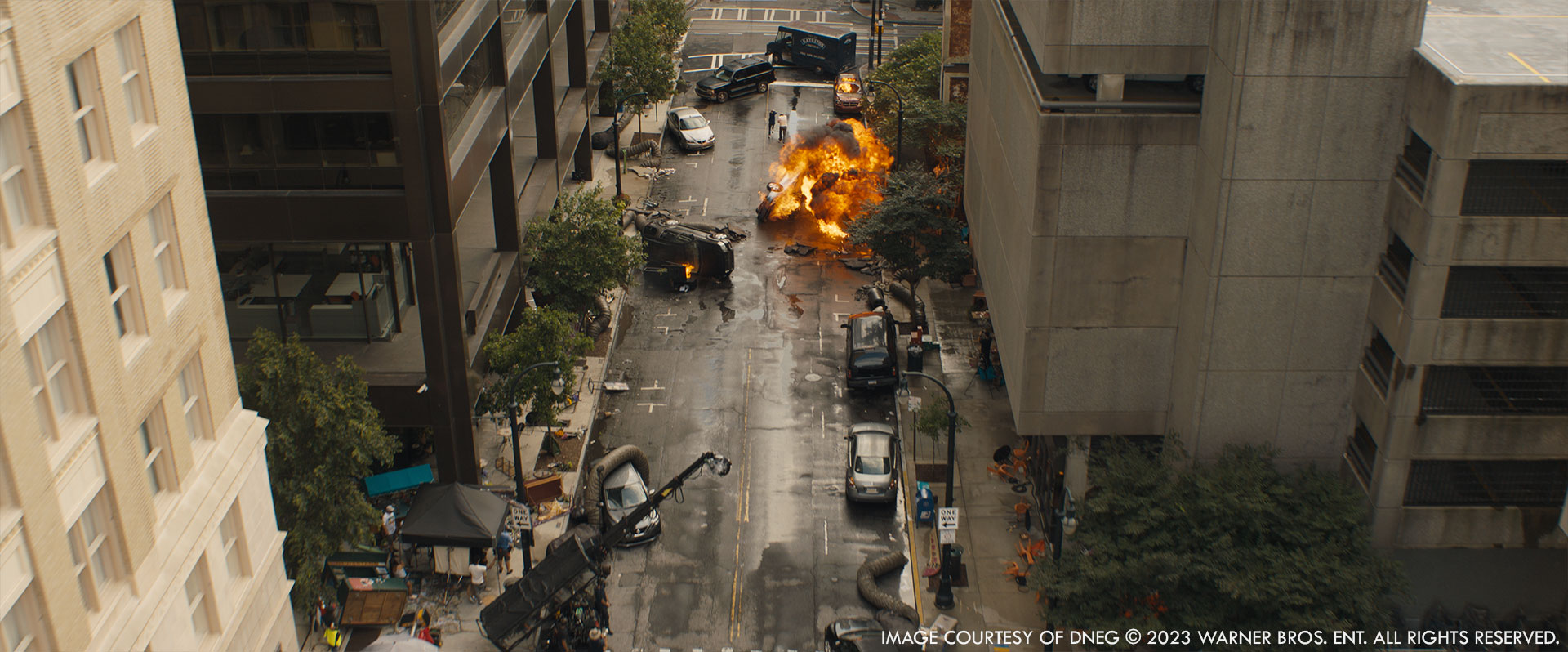
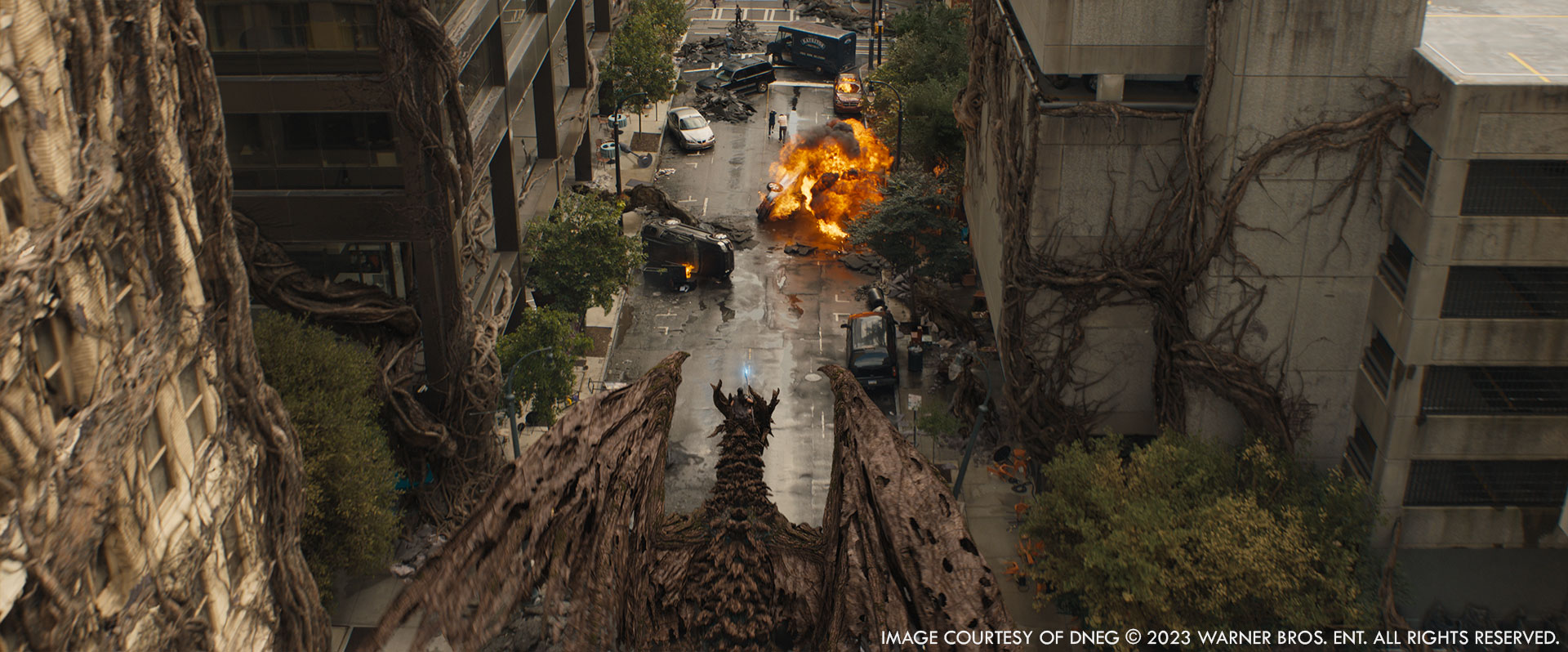
Which part of the city was the most complicated to create?
Russell Bowen // As Ray mentions, the city itself is completely CG, We built a procedural setup of the entire city, from downtown sectors all the way out to the suburbs. At that stage, it almost felt like the show turned into a “science project”. It needed to hold up from 15000 ft to 20-30 ft away from the lens. Our Environment Supervisor Daniel Rhein and his team of wizards spent countless weeks and months creating everything from skyscrapers to trash cans. They built a road generator and grid system procedurally in Houdini so we could create an instanced masterpiece that was as close to the real Philly as possible. All of this using satellite data of the real city as a base, even the height maps of buildings. Oh and it needed to be FX friendly as well for Antheas’ ‘Power of Axis’. You can only imagine the headaches our CG Supervisors had fitting this all inside the RAM limits!

Which sequence or shot was the most challenging?
Russell Bowen // The end battle in the stadium was probably the most challenging as it was 95% CG. For the vast majority of the shots, the only thing real or kept from the plates is Shazam and Kalyso’s faces. This sequence had everything. A superhero that can fly and shoot lightning, a fire breathing dragon, a destroyed stadium, complete with a giant mythical Tree of Life with everything encased in a forcefield-like magical dome. It was a VFX artist’s dream or nightmare, depending on who you ask!
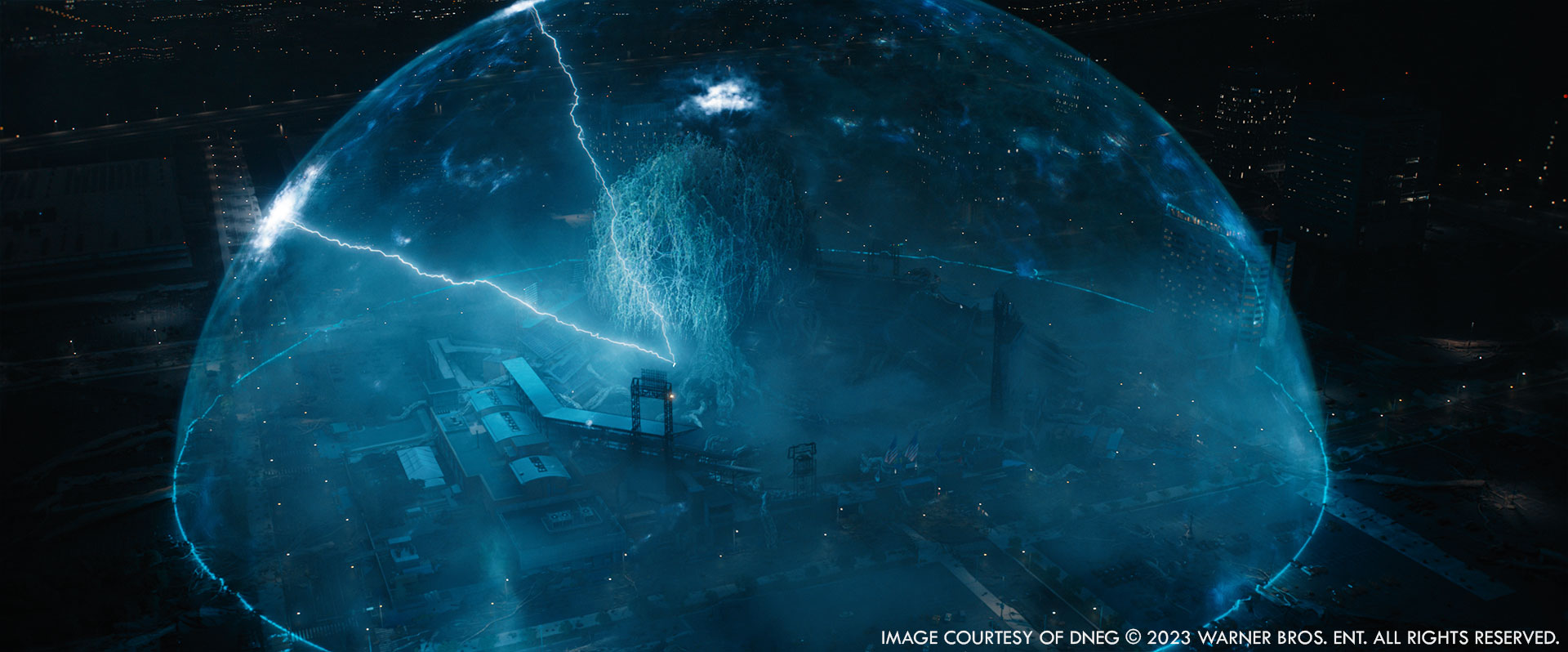
What is your best memory on this show?
Russell Bowen // I’m going to give the cheesy answer, but certainly the truest. The team! When you work on a mammoth show like this, the key ingredients are teamwork and creative collaboration. We had an incredible team with all the passion I could have asked for.
How long have you worked on this show?
Russell Bowen // I can’t quite remember the exact date I joined, but it was probably around 14 months, maybe a bit longer.
What’s the VFX shots count?
Around 750 shots.
A big thanks for your time.
WANT TO KNOW MORE?
DNEG: Dedicated page about Shazam: Fury of the Gods on DNEG website.
© Vincent Frei – The Art of VFX – 2023






